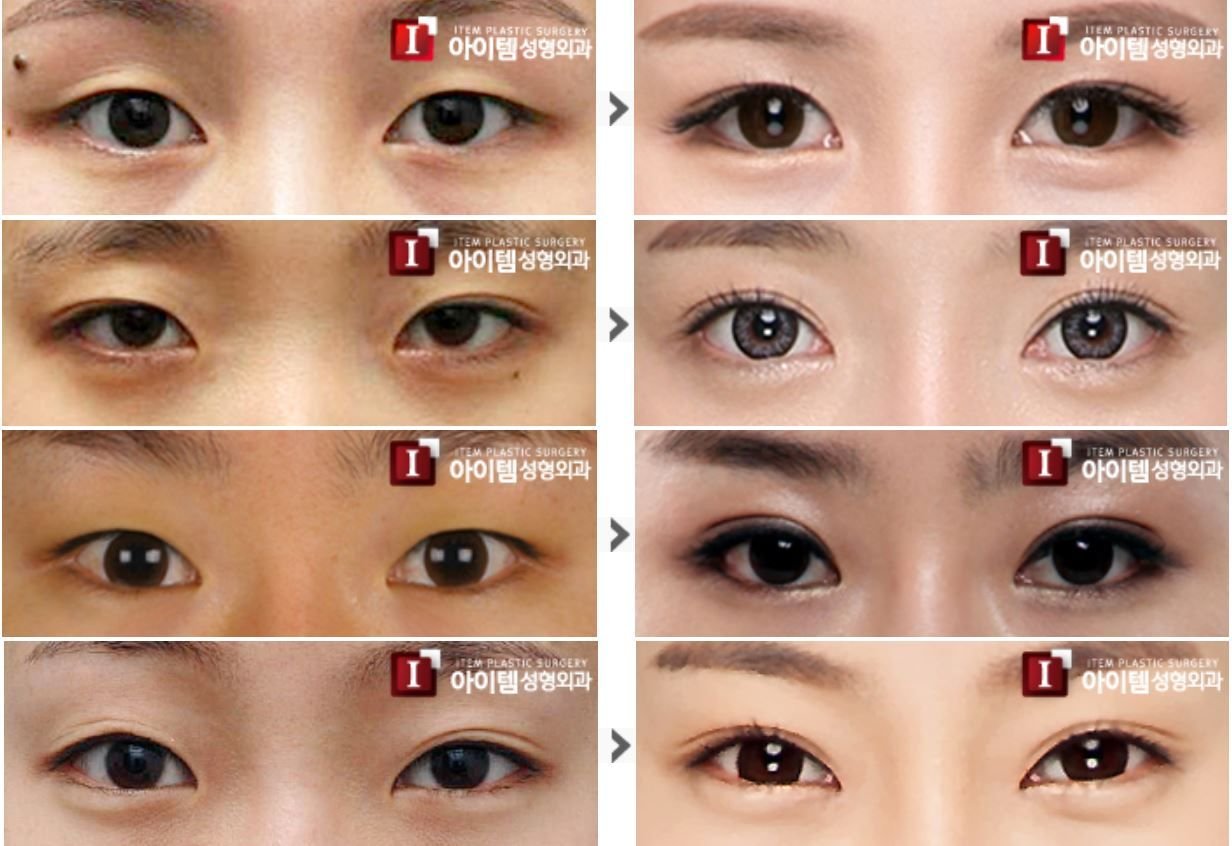
“Pure Eyes”
I’m not quite sure if this has a proper term yet in Korean as it has only recently become a more ubiquitous scenario in South Korea. My wife and I endearingly call it the “Ssaeng Noon // 쌩눈” or “Pure Eyes” situation.
It stems from the almost societal standard to go through plastic surgery to some degree in the country, one where society judges individuals heavily by physical appearance. Although Koreans, both male and female, go through a diverse set of operations concerning chins, cheek bones, hairlines, noses, etc., the most common staple by far is the double eyelid surgery. This has become almost a societal mandate and as widespread as having braces in the US. If you walk down the streets of downtown Seoul, you’ll be hard pressed to find even 1 out of 100 random passersby that don’t have this feature. Children have it down as early as middle school and even elderly citizens go through with this later in life.

And now, we’re fully rounding out the first complete generation of the first wave of plastic surger-ied individuals after the practice became more widespread in the early 2000s. Women who have gone under the knife are finally having children and, well, plastic operations don’t exactly get codified onto our genetics. We’re now seeing a whole generation of children born without the signature feature of metropolitan faces and thus very very different looking than at least their mothers, if not both of their parents.
You’ll see this a lot in both downtown daily culture in Korea as well as all over television. Young mothers with strollers will strut enormous layered eyes while their babies have that classic almond look. Celebrities will come on television with their newborns and it’s clear as night and day. The whole thing is a bit of a hush-hush situation as everyone is going through it but no one wants to talk about such things.

Talk show celebrity Hwi Jae Lee and his wife and TV-star sons. Source
So now we have a real societal conundrum on our hands - how do we explain this facial difference to young children? My own childhood into the 21st century was the period when Korean society was really trying to figure out if the plastic road was one we collectively wanted to go down. History has ossified the cultural choice and now we’re beginning to experience a real consequence from that earlier decision. The eyelid change is arguably the most drastic one that is done on our most visible bodily component and it’s bound to raise internal questions of why “I don’t look like mommy and daddy.”
Don’t get me wrong, this is not meant to be a judgmental post at all and absolutely no shade thrown to either the kids or parents. I suspect I’ll receive similar questions when kids ask why they (probably will) have crooked teeth and I’ll have to explain the whole process of dental correction. The main difference is that this will have much more significant weight in South Korea where homogeneity around beauty is critical. This is a country where admission into companies and even universities hinge on looks and a friction between parents and offspring, even at toddler ages, will likely create social issues.

Actor Bum Soo Lee and his family. Source
As with most societal or cultural issues, I find it best to identify them, poke a bit of fun, and lower the bar of discussion around them. In our generation, the internal question of “how early is too early?” around plastic surgery will unmistakeably be a question that resonates across all new families, especially now that almost all women and many men have crossed the line for at least a few physical and likely facial operations. There has always been an amount of shame associated with plastic surgery in Korea and this is going to add another layer of stress for the children of former patients.
What do you think? What should Koreans do in this situation? Do you think this will intensify the trend of plastic normalcy or do you think we’ll see a renewed interest in “natural” looks? Let me know in the comments!

